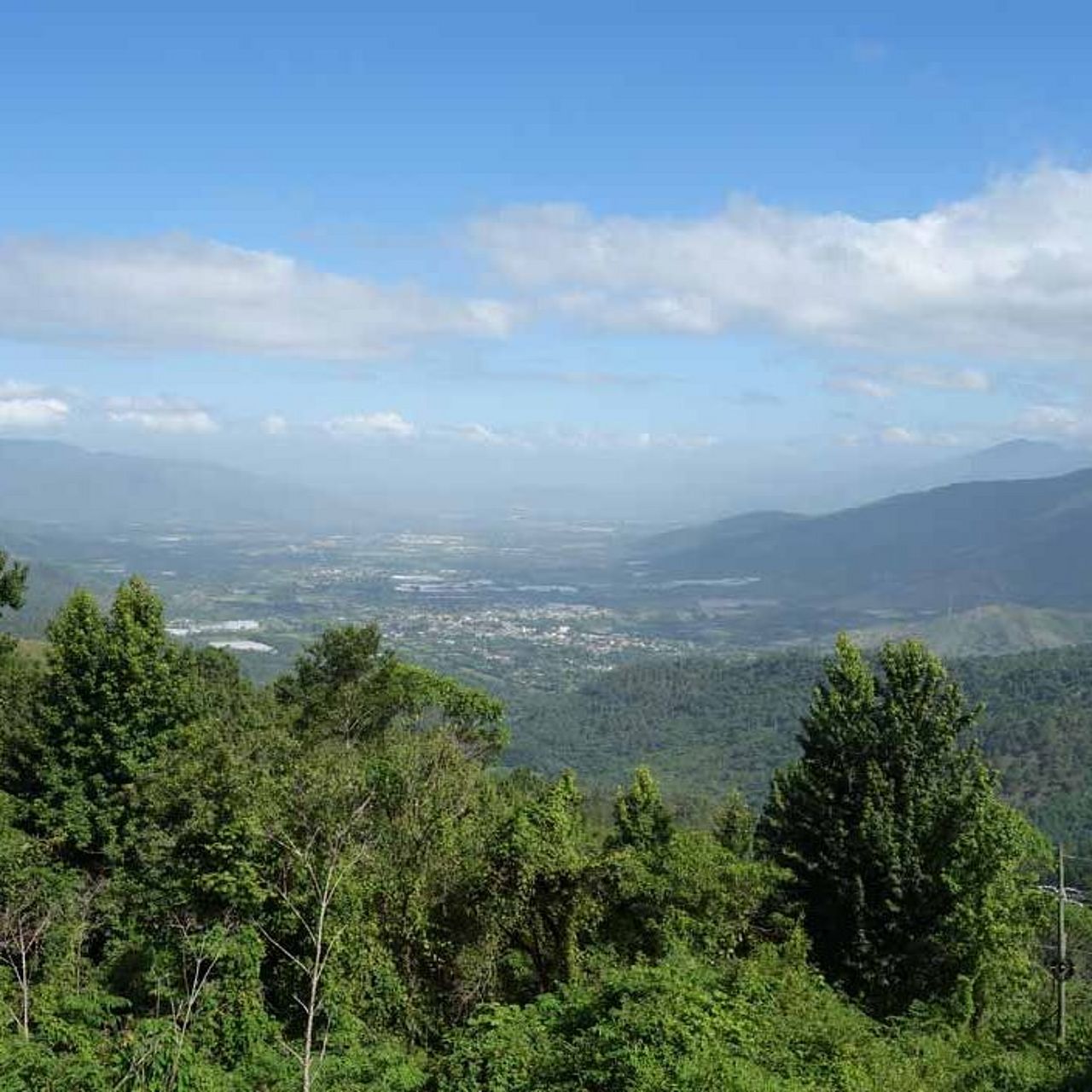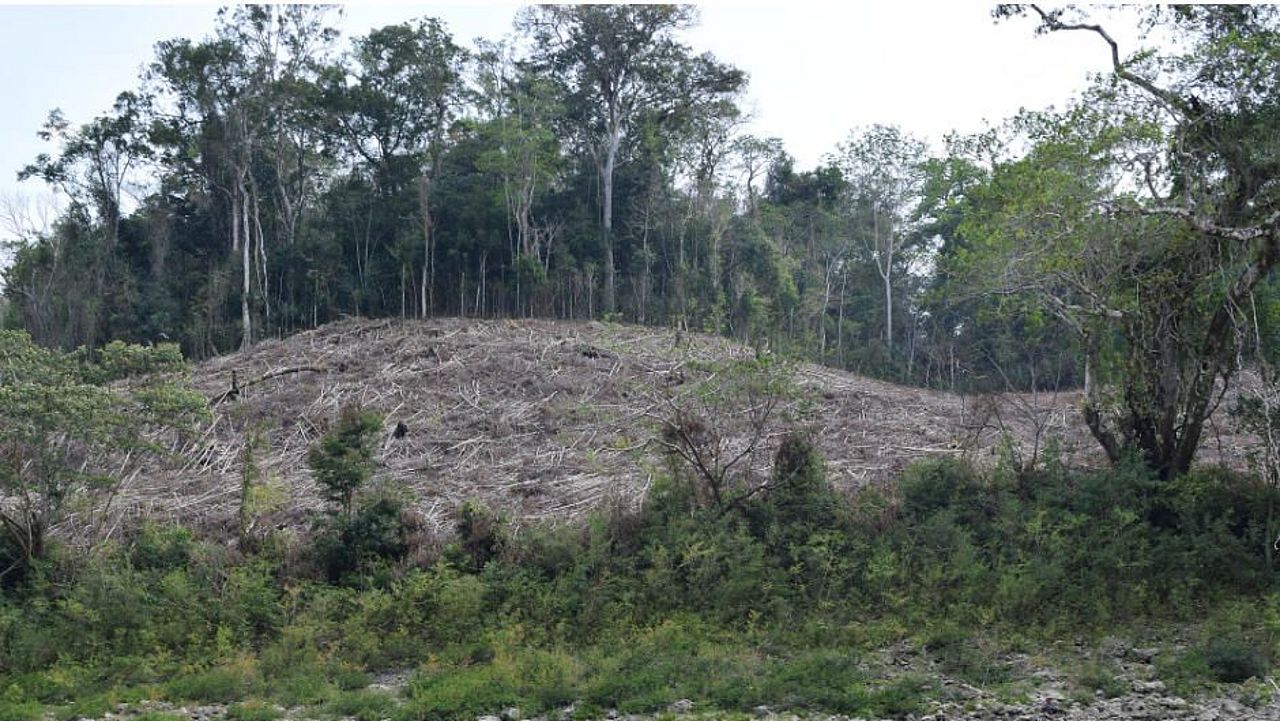At the border between water and forest, the delicate interdependencies inbetween and their importance for human livelihoods become especially clear. The GreenWatersheds-project recognises those not only as a risk but also as an opportunity: well-aimed interventions help the ecosystems to mutually support each other in the struggle to keep their balance amidst the climate crisis.

Where water and forest meet, the diverse contributions of healthy ecosystems to human livelihoods and how the climate crisis puts them at risk becomes increasingly evident. Rivers for example are vital water sources not only for agriculture and human consumption but also for forests as indispensable habitats for countless animal and plant species, sources for food and income for the local population, and carbon dioxide-sinks for limiting global warming. If forests vanish because of logging, clearance for crops, wildfire or drought, much more than a source of human livelihoods is lost. Evaporation increases, riverbanks erode due to the lack of supporting root systems, water gets even scarcer, arable land and wildlife habitats are destroyed, and the released carbon dioxide fuels the climate crisis even more: a vicious circle. On the other hand, strategic reforestation of riverbanks simultaneously regenerates woodland areas, improves hydrologic balance and prevents erosion.
Ecosystem-based Adaptation: changing the straightjacket for a balancing pole
Such “Ecosystem-based Adaptations” (EbA) are the centrepiece of the GreenWatersheds-project that OroVerde is implementing together with four local partner organizations in watersheds in the Dominican Republic, Guatemala, Cuba and Mexico. Instead of trying to force the ecosystems that are tumbling out of balance due to the climate crisis under control with artificial structures like dams, dykes or channels, EbA-measures consciously utilise the interconnections within ecosystems to puffer and mitigate the impacts of climate change. At the same time, EbA-measures typically are exponentially cheaper, easier to implement and as diverse as the ecosystems themselves: From the aforementioned strategic reforestations to agroforestry systems that combine agricultural use and woodland conversation or living fences which serve as wind barriers, offer shadow and forage, and provide a habitat for a variety of animals, EbA has an answer to almost any challenge.

Más información y materiales en Español
En la página en Español encuentra noticias del proyecto CuencasVerdes y una amplia gama de publicaciones desde manuales detallados para reforestación y agricultura con enfoque de Adaptación basada en Ecosistemas (AbE) hasta planes de adaptación para localidades específicas.
Carrying practical experience into policy making and public planning
However, GreenWatersheds does not stop at implementing individual EbA-measures. Based on detailed analyses carried out together with the local population, EbA-plans with carefully concerted measures are constructed for every watershed. These are tested in practice and assessed regarding their effectiveness, cost-benefit ratio, scalability and transferability. Additionally, studies for the economic evaluation of the “services” provided by intact ecosystems are conducted to further illustrate their importance for human livelihoods. Finally, this practical knowledge and data is used to approach decision-makers from politics and the economy to introduce EbA into public planning processes and secure stable funding.
Development and implementation of plans for Ecosystem-based Adaptation to the climate crisis in 4 watersheds in Mexico, Guatemala, the Dominican Republic and Cuba, including:
- Improvement of the resilience of more than 210.500 hectares of woodland to climate change,
- Reforestation of more than 240 hectares around the watersheds,
- Measures supporting the natural regeneration and soil improvement on at least 360 hectares,
- Setting up of almost 350 forest-friendly agricultural modules by local communities in the watersheds, among others through agroforestry systems, crop diversification, “chinampas” (traditional swimming gardens in Mexico) and establishment of capacities for crop processing (e.g. for coffee, cocoa or fruit) to improve producer income,
- Creation of new or strengthening of existing governance-mechanisms for watershed-management and securing long-term funding for EbA-measures,
- Economic valuation of ecosystem services and cost-benefit-analyses of EbA,
- Campaigns for awareness building among political and economic stakeholders.
Lessons learned Factsheets
This is ecosystem-based adaptation to climate change:
Ecosystem-based adaptation (EbA) is about long-term preservation of the ecosystem services required for human needs in spite of climate change. This includes cushioning the consequences of climate change (e.g. droughts, heat waves, but also heavier rainfall and more frequent flooding). Measures to maintain sustainable use and the restoration of ecosystems can thus help the local population to adapt to climate change. It is therefore a question of using biological diversity and ecosystem services to adapt to climate change. Such measures are usually much cheaper than "grey infrastructure" and often have further positive effects.
Here are a few examples:
- Mangrove forests protect coasts from storms and floods - and that is much cheaper than building dikes. In addition, the mangroves increase biological diversity and provide habitat for fish and shrimps, which in turn improve the nutrition and income of local people.
- Well-forested slopes can protect roads and other infrastructure from erosion and landslides.
- Agroforestry systems can protect soils and reduce the risk of crop failure by increasing the diversity of species. Preserving a greater diversity of species and different genes in natural and agroecosystems acts as a natural insurance in the process of adaptation to changing climatic conditions.
Project partners

The FDN is a private foundation for sustainable development and nature conservation in Guatemala. It specialises in developing forest management and protection plans, as well as advising and supporting the local population in reforestation and forestry.

Centro Naturaleza is working for almost 30 years in the field of sustainable agriculture, watershed management, environmental education and sustainable development projects in the Dominican Republic.

The UPSA is the representative of the national authority for protected areas CNAP in the province of Guantánamo in Cuba. It is in charge of the management and scientific investigations of the Alexander von Humboldt National Park and other protected areas in the province.

Pronatura Mexico is a nationally recognized organization dedicated to rebuilding priority ecosystems, working with the private sector, government institutions at various levels, and local communities.
Questions about the project?

Torsten Klimpel
+49 228 24290-22
tklimpel[at]oroverde[dot]de
Photo credits: OroVerde (river landscape Dom.Rep., deforestation Guatemala), OroVerde/Torsten Klimpel (political actors), OroVerde/Jan Ohnesorge (man on boat), Defensores de la Naturaleza (river landscape Guatemala), Teodilio Matias (women in tree nursery), Herbert Dohlen (documentation agroforestry)













